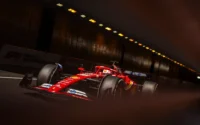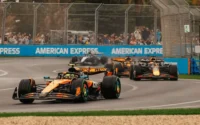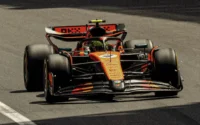The Circuit de Monaco, stretching 3.337 km (2.074 mi), is probably, if not, the most famous street circuit in the world, winding through the city streets of Monte Carlo and La Condamine and encircling the harbour of Monaco.
Often and even officially known as “Monte Carlo,” the circuit predominantly lies within the Monte Carlo neighbourhood of Monaco. Each year, the circuit hosts a series of high-profile racing events across three weekends in April and May. These include the Formula One Monaco Grand Prix, the Formula E Monaco ePrix, and the Historic Grand Prix of Monaco.
The Monaco Grand Prix is prestigious in motorsports, being one of the three races that constitute the Triple Crown of Motorsport. This illustrious trio of events is considered the pinnacle of racing achievement, with a victory at the Monaco Grand Prix highly coveted by drivers across different disciplines.
Formula One History Recommends
Circuit de Monaco
| First Grand Prix | 1950 Monaco Grand Prix |
| Number of Laps | 78 |
| Circuit Length | 3.337km |
| Race Distance | 260.286 km |
| Lap Record | 1:09.954 Lando Norris (2025) |
Circuit
When was the Circuit de Monaco built?
Since its inception in 1929, the Circuit de Monaco has largely retained its original layout, a unique characteristic given its status as a city circuit. The track’s configuration is intrinsically tied to the road system of Monaco, making it one of the few circuits in the world where the race track and everyday city streets are the same.
Over the years, any modifications to the circuit have been closely associated with changes to Monaco’s public roads. Unlike purpose-built racing circuits that can be modified independently, alterations to the Circuit de Monaco have typically coincided with urban development or infrastructural changes within the principality. This means that the track’s evolution has mirrored the city’s evolution.
Its tight corners, narrow streets, and elevation changes have remained largely consistent, providing drivers with a challenging and thrilling experience. This consistency in the track’s layout over decades also means that generations of drivers have navigated the same corners and straights, contributing to the circuit’s legendary status in motorsport. The Circuit de Monaco stands as a bridge between the sport’s past and present, maintaining its original character and charm while continuing to challenge the skills of modern racing drivers.
The track is notable for including the slowest and one of the fastest corners on the calendar. The Fairmont Hairpin, notorious for its tightness, is taken at a mere 48 km/h (30 mph), requiring drivers to demonstrate precision and control. In contrast, the circuit also features a high-speed section – the flat-out kink in the tunnel, just a few turns past the hairpin – where drivers accelerate to 260 km/h (160 mph). This combination of slow and high-speed corners within the confines of a track, the width of a public road, adds to the allure and challenge of the Monaco Grand Prix, reinforcing its status as a crown jewel in the Formula One calendar.
Constructing the Circuit de Monaco before a race weekend, with its infrastructure and stands, takes six weeks to set up and an additional three weeks to dismantle. This time-consuming task is due to the circuit’s unique characteristics: it is narrow, features numerous elevation changes, and comprises several tight corners.
When was the first Monaco Grand Prix?
The origins of the Monaco Grand Prix, a cornerstone event in Formula One, trace back to 1929. This inaugural race in the glamorous Principality of Monaco was the brainchild of Antony Noghes, a cigarette manufacturer. Noghes, along with his associates from the Automobile Club de Monaco, decided to organise a race through the streets of Monaco, setting the stage for what would become one of the most prestigious events in motorsport.
The Monaco Grand Prix secured its place in the inaugural Formula 1 World Championship season of 1950, marking the beginning of its association with the F1 racing championship. Since 1955, the race has been a constant fixture on the Formula 1 calendar, underlining its enduring appeal and significance in the world of motorsports.
The race is renowned not just for its challenging track that winds through Monaco’s narrow streets, but also for the glamour and prestige it brings to the Formula 1 season. Over the years, the Monaco Grand Prix has become synonymous with luxury, prestige, and the highest level of racing skill, attracting a global audience of motorsport fans and celebrities alike.
The continuity of the Monaco Grand Prix on the Formula 1 calendar since 1955 showcases its integral role in the sport, both as a test of driving skill and as a symbol of the opulence and spectacle that Formula 1 embodies. The event continues to be a highlight of the racing season, celebrated for its unique combination of historic tradition, challenging racing, and scenic beauty.
Circuit de Monaco lap record
The official lap record for the current F1 Grand Prix layout is 1:09.954, set by Lando Norris during qualifying for the 2025 Monaco Grand Prix driving for McLaren.



